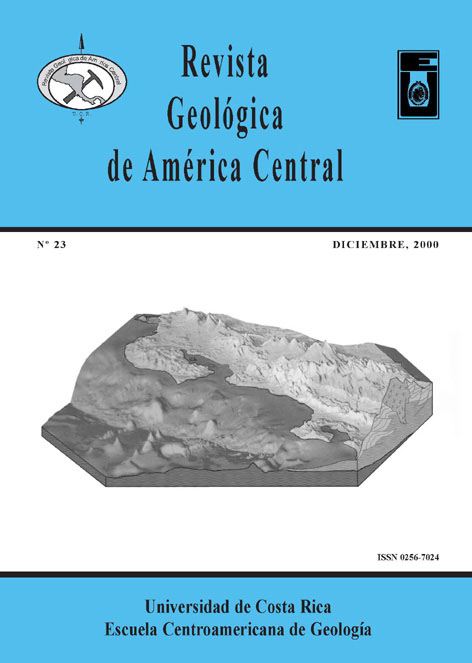Abstract
Several thesis studies have been completed in Costa Rica, that evaluate the recharge to aquifersusing pluviographic rainfall records and infiltration tests of soils. In this study, an equation has been developedto describe recharge using base infiltration and monthly precipitation data. The rainfall was divided into runoffand infiltration components. The rainfall data (measured every 10 minutes) that were in excess of base infiltration were considered as surface runoff and the remainder was considered as potential infiltration. The summa-tion of these calculated recharge values produced a monthly recharge that potentially could infiltrate into thesoil. The pluviographic records analyzed in the thesis works, were obtained from the following rainfall stations:Aeropuerto Juan Santamaría, Puntarenas and Palmira. A similar work was done in SENARA (National Serviceof Ground Water) using the rainfall station of Hacienda Tempisque.From the thesis works and existing literature of runoff coefficients data, correlation was done in order to develop an equation to evaluate the infiltration, which took into account rainfall interception on vegetation, base infiltration of soils, vegetative cover and surface topography.In this way, a potential infiltration equation is obtained (the calculation of infiltration based on rainfall intensityand soil texture) for the mentioned zones. The infiltration coefficient was determinated by correlating data from,achieving a correlation coefficient ( R2 ) of 0.99.A general infiltration equation for Costa Rica was obtained, in which the effects of topography, surface vegetation and rainfall retention were included. The values of the potential infiltration obtained with the general equation was compared with the infiltration values obtained from the rainfall records. The equation has an error of13% with 68% of confiability and an error of 26% with 95% of confiability.This method simplifies the procedure to estimate infiltration, which is needed to determine the recharge of aquifers using the base infiltration of the soils and the mean monthly rainfall of the zone. Without the equation, therecharge should be estimated with the daily analysis of the rainfall records. Possibly this equation could be usedin Central America with similar climate.Comments
Downloads
Download data is not yet available.






